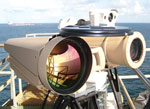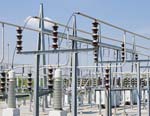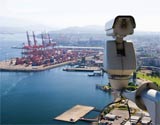The Wi-Fi Alliance has won a Best of What's New 2010 Award.
The company is offering pre-built headends with deep discounts on assembly costs.
Security Products magazine, the only integrated product magazine reaching the entire security market, announced the winners of its 2010 New Product of the Year Award at the publication’s premiere Virtual Event today.
I’m no fan of the current administration in Washington, D.C., especially when it comes to spending money. The White House, it would seem, pays its bills by printing more money and borrowing from a creditor that has no interest in democracy.
- By Ralph C. Jensen
- Jul 28, 2010

Technological refinements and cost effectiveness in video surveillance systems are changing the security industry as we know it. Just about every aspect of a surveillance installation benefits from enhanced capabilities.
- By Mark Oliver
- Feb 01, 2010

The threat against a network of gas pipelines goes far beyond the possibility of terrorism, and includes natural causes and careless excavation. Security, as well as the inherent design and operation of a natural gas pipeline system, can help reduce the probability of an incident, which could have an adverse affect on the nation.
- By Ralph C. Jensen
- Feb 01, 2010
Many of today's security systems and products integrate with each other, and thanks to end user demand, manufacturers have made integrating with multiple security products easier. But while product integration is a huge advantage to the end user, and manufacturers regularly provide lists of compatible products, it is important to understand how compatible two products really are.
- By Darren A. Nix
- Dec 07, 2009

Over the past decade, as a result of tragedies at school and college campuses nationwide, student and staff security has become a high priority.
Also in the last 10 years, driven by an increase in the population of school-aged children, new school construction and the renovation of existing facilities have surged.
- By Bill Fitzhenry
- Dec 01, 2009

This year is the turning point for the deployment of large-scale, multi-service municipal wireless mesh networks expanding upon their public safety wireless networks for a variety of municipal and government services.
- By Bo Larsson
- Nov 06, 2009

Technology from the security industry fulfills an essential role in protecting the nation's critical infrastructure. This is defined by a Homeland Security Presidential Directive as physical and virtual systems that are "so vital to the United States that [their] incapacity or destruction would have a debilitating impact on security, national economic security, national public health or safety."
- By Jason Oakley
- Sep 08, 2009

As the necessity for public and personal safety increases, the demand for surveillance solutions requiring the most rigorous, video-based security standards continues to grow.
- By Avi Shabtay
- Sep 04, 2009
Communication Networks of Danbury, Connecticut, or ComNet, a manufacturer of fiber optic transmission and networking equipment, has been added to the product offering of Convergint Technologies.
Bosch Security Systems will provide communications and security technology to a Hamburg-Moorburg coal-fired power plant run by Vattenfall Europe Generation AG & Co. KG. The contract includes everything from public address systems to alarm signaling and evacuation, as well as fire detection technology, video surveillance, and communication and low-voltage networks for dual-unit plants.
MoMA Embraces New Internet Applications and Improves Threat Protection with PA-2000 Series Next-Generation Firewalls

Acts of terrorism can be carried out in many forms and at various locations around the world. Those who pose the most risk are individuals or groups that breach secured areas of critical infrastructure facilities, such as seaports and airports, government buildings or power and chemical plants.
- By John Whiteman
- Mar 02, 2009

Security directors face large problems in large facilities. Officials at airports, seaports, industrial facilities and other large installations deal with a unique set of security problems. They also have a unique set of limitations. They must protect against a variety of security threats, many of which are unknown, and they must address these issues with limited manpower. They also are dealing with creative enemies who are always adapting and enhancing their sly methods.
- By Kurt Stoll
- Mar 02, 2009
The potential for catastrophic injury in the petrochemical industry makes safety training and credentialing of employees imperative. Coordinating this process for a variety of industries, including many in the petrochemical fields of southern Alabama, is Training Solutions for Construction and Industry.
- By Apryl Erickson
- Mar 02, 2009
With 1.3 million workers at 3,200 port facilities and on 10,000 U.S. flagged vessels, the initial TWIC roll-out seemed like a good place to start securing U.S. transportation locations. The Transportation Security Administration is requiring all port employees to use tamper-resistant smart cards, which include encrypted magnetic stripes, bar codes, and contact and contactless technologies.
- By Terry Wheeler
- Feb 01, 2009